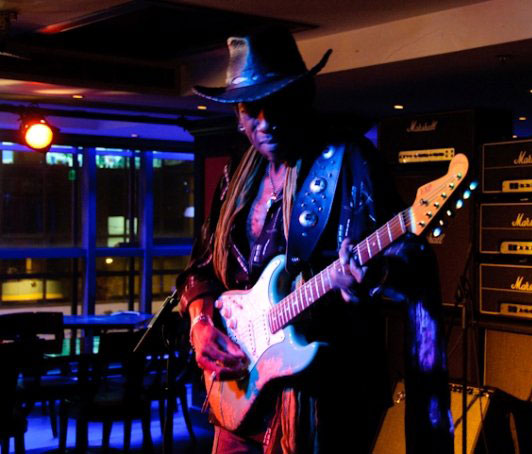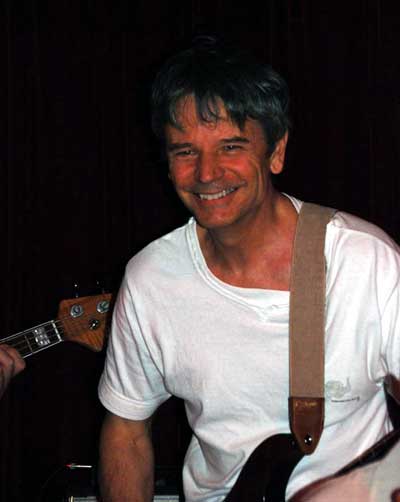Jimy has played with Wilson Pickett, The Wailers, Namie Amuro,
and Janet Jackson, to name but a few. His home has been Jamaica,
New York City, Tokyo, China.
Fuji TV
www.bcmagazine.net
Jimy on youtube.com
youtube download (~40 seconds)

|
|||||||
|
|
||||||||
|
updated 9-01-2013 |
|
About us
|
||
|
Jimy Graham
Blues musician |

|
|

|
Doug Millar
Master of Engineering degree 1970. Worked in audio signal processing,
circuit design, cellular phones. Total of 8 publications, 8 patents.
Amateur guitar player since 1965. Lived in Canada, USA, Tokyo.
electrical engineer |
|
|
The Short Story
|
||
|
This project started early in 2009 when we asked the question "What would an electric
guitar sound like with a high fidelity path from the strings
to the listener?"
Starting at the source, we first looked at converting string vibrations to electrical signal. Translation: pickups. After looking at available magnetic materials, doing magnetic field simulations, and building several prototype pickups, we finally arrived at a design that closely resembles a commercially available pickup: the DiMarzio DP186. The next step was to get the signal from the pickup to the guitar amplifier and to the listener. Even the best available instrument cables have something called capacitance that can kill the tone. One solution is to use pickups with small, low-inductance windings, but this unfortunately results in weak (low level) output. The way to get both good tone and good output level is an amplifier. This can be either active pickups or a buffer amplifier to drive the instrument cable. A battery is needed, but this seems to be a necessary evil. Active pickups are a nice compact solution, but some players are reluctant to carve up a favorite guitar to install two or three (expensive) active pickups. Instead we chose to use an external buffer amplifier positioned close to the guitar. The first idea was to use custom pickups, basically DiMarzio DP186 with modified low-inductance coils, plus a high-gain external buffer amplifier to deliver a strong signal. Later though, we chose a less painful solution. Standard pickups and standard guitar wiring are used together with an external buffer amplifier that includes a high-Q filter to extend the bandwidth of the pickups. Results: Yes, we did achieve high fidelity. Magnetic simulation shows that the DP186 pickup responds to a very short section of the string: much shorter than a full-sized humbucker and shorter than even a single-coil Strat pickup. The DP186 pickup together with an external buffer amplifier and high-Q filter delivers a bandwidth of 18,800 Hz from the strings to the guitar amplifier. So finally, just one new component is needed to deliver high fidelity from the strings to the guitar amplifier. We called it the "High-Q Driver": a small metal box with a short cable that plugs into the guitar output jack. This no-compromise, reliable, commercial design (patent applied for) has been thoroughly tested and is available for purchase. See the Contact page. |
||